How often does the idea of your car battery cross your mind during the day? Since we all have lives that take over our minds and routines, we’re guessing your answer is – “never”- until there is a reason for you to check it out.
A blinking dashboard car battery light can point towards various numbers for issues under the hood such as battery glitches, faulty alternator, faulty alternator belt, corroded battery terminals, faulty wiring, bad ground strap, loose battery cable, and much more.
But before busting out the jumper cables and calling up for possible battery repair options, take some time to understand and pinpoint the exact cause behind why your battery light might be coming on intermittently. Usually, it is a quick fix that you can try out yourself and if not, you can always call your trusted local mechanic!
Table of Contents
What does the battery light exactly do?
If your car battery light turns on when you start the car, there is nothing to be worried about! It is typical and normal for the battery light to come on when you turn on your car, and it usually dims out within a few seconds.
If the light persists and stays on even while you’re driving, then it’s time to pay attention. You might notice other symptoms of a weak battery, such as a stereo that won’t turn on and power windows that come up quite slowly.
The battery light that is situated on your dashboard points towards a charging issue with your car battery, and if the light turns on and stays on, it is a serious indication to inspect the cause.
6 Main Reasons For Your Battery Warning Light Comes On Intermittently
Reason #1 – Poor battery
A typical 12-volt battery can have a lifespan ranging between three to five years. Even if some manufacturers speak and boast about a better lifespan, it is crucial to remember that most batteries, if not all, do not last for such a long duration.
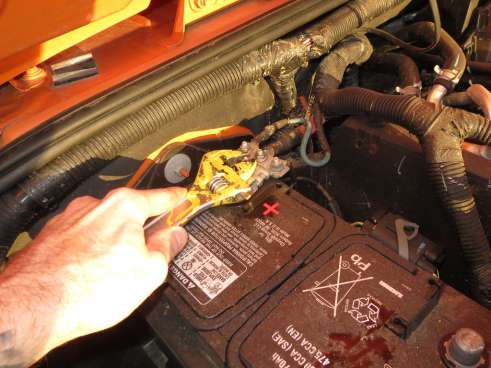
The conventional batteries have a lead plate and a lead dioxide plate placed in a sulfuric acid electrolyte formula within each cell. With time and use, the plates, as well as the entire cells, can begin breaking apart and electrolyte formulas can leak out. In case this happens, it is time for a replacement.
Solution: You would need to consult your local mechanic and ask him to check out if the plates or cells have broken down, and if they have, ask them to assist you with replacing it with a new battery. They will suggest the appropriate one according to your car’s make and model.
Reason #2 – Faulty alternator
It is comparatively easier to inspect the functioning of the alternator unit with the help of a multimeter. You should ideally see a voltage ranging between 13.6V to 14.6V. In case the voltage falls below 12V, the ECU will proceed to trigger the battery to turn on. This is an indication to pause and check the problem.
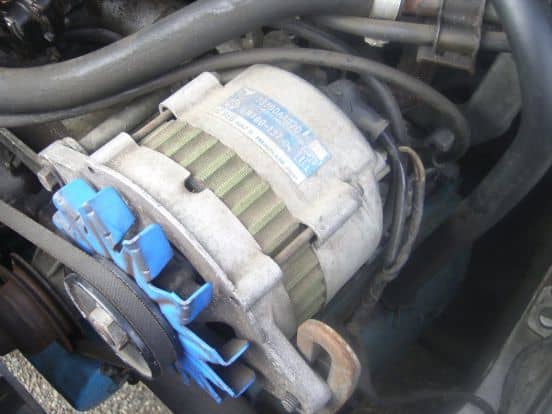
A voltage regulator is a vital unit that manages and regulates the voltage output to a safe threshold of 14.5 volts. In case this unit is not functioning properly, it can be the cause too.
Solution: Check voltage by connecting the multimeter to the battery’s ends, if the voltage is between 13.5V to 14.5V, your alternator is most likely not the component causing the battery light to turn on.
But if you see a voltage lower than 12V, you need to consult your local mechanic at the earliest.
Reason #3 – Faulty alternator belt
An alternator belt is vital as it forms the smooth connection between the engine, alternator, and accessories to each other. These belts usually break down with time and usage, just like any other component. These belts can get misaligned, become too loose, or too tight as well.
If a faulty alternator belt is what is causing the issue and triggering the battery light to turn on, then you might be hearing squealing sounds originating from under the hood whenever the car is running.
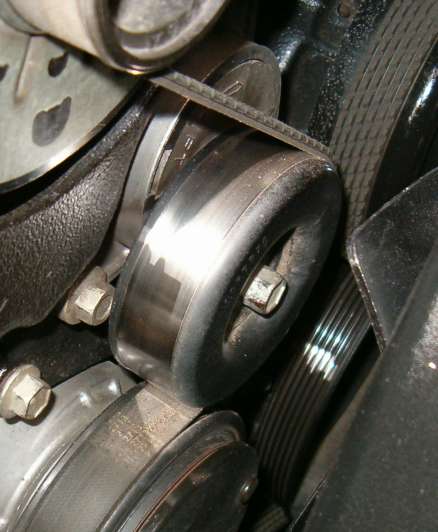
Solution: To get the alternator belt properly inspected, it is best advised to call your local mechanic since it can be rather tricky to figure out the issue all by yourself. Usually, if the belt has been misaligned or loosened, the mechanic can fix it within an hour. But if it belt has broken down, it needs to be replaced.
Reason #4 – Rusted battery terminals
The battery terminal ends are channels through which electricity flows, hence it is crucial to try and double-up the resistance by simply coating them with other materials that are typically bad conductors.
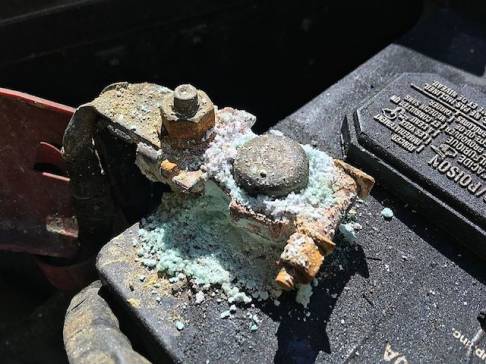
We have all learned in middle school that rusted electrical parts or units are typically very poor conductors and often become an origination point of hazardous connections within a standard system.
Corrosion or oxidation is a white, green, or blue residue of a chemical reaction with normal usage and is worsened by persistent heat; hence hotter climates are typically linked with higher corrosion.
It is an acidic reaction and will disintegrate a car’s paint and metal unit as well as highly irritate the skin, so tread with caution.
Solution: In case of corrosion or presence of rust on your battery terminal ends, wear the required protective gear and thoroughly scrape off the rust on the terminals with a hard-bristled toothbrush and a formula of 1 big Tbsp. of baking soda mixed in a cup of water. This is an alkaline solution and will help neutralize the acidity of the corrosion.
You can also invest in battery terminal brush cleaners which are customized brushes to clean the battery posts thoroughly as well as each of the terminals.
Reason #5 – Disconnected battery cable
Ideally, your battery cables must fit securely around the battery terminal posts to ensure an uninterrupted connection. If the connection is sure, one is usually unable to rotate the cable by just using their hands.
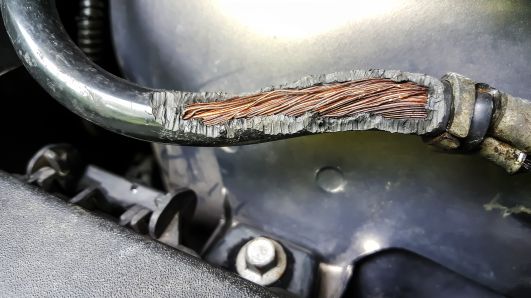
Solution: In case the connection does not seem to be secure, carefully tighten the battery cable ends with pliers or another tool so that it connects securely. Sometimes, battery bolts tend to break or strip out if tightened too much, so be careful to not over-tighten.
Reason #6 – Excessive use of accessories in the car
Since the car’s accessories receive their power from the alternator belt, along with the process of the battery charging itself, hence using them excessively at the same time can siphon off too much voltage and starve the battery of power.
Solution: You can try to disconnect all accessories from within the car and turn off the car for a couple of minutes to cool down and balance the power within the battery. Turn on your vehicle after a few minutes and check whether the battery light is still on. If not, then great! You’re good to go.
Solution: You can try to disconnect all accessories from within the car and turn off the car for a couple of minutes to cool down and balance the power within the battery. Turn on your vehicle after a few minutes and check whether the battery light is still on. If not, then great! You’re good to go.
Conclusion
Usually, when your battery light turns or triggers on, it does not signify a severely immediate issue. It can hint towards something as small as overuse of accessories or something much worse, such as a faulty alternator cable. But fear not, all of these issues can be handled with ease by your local mechanic.
Follow our guide to inspect the issue by yourself before rushing to call for a replacement of any component.
